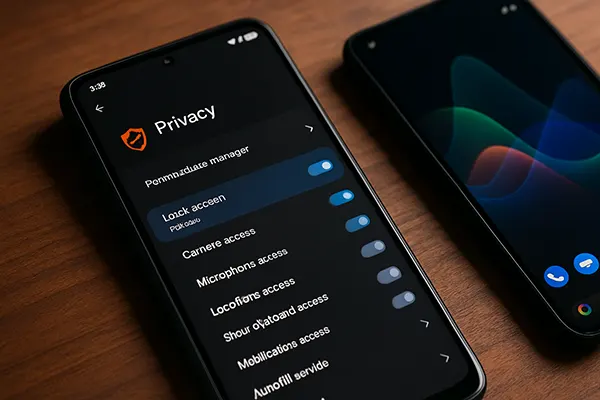
Mobile Ethics: How Apps Manipulate User Behaviour and What You Can Do
In the digital age, mobile applications have become deeply integrated into daily life. However, the convenience they offer is often paired with techniques that subtly influence user behaviour. These manipulative methods raise serious ethical concerns. This article explores how apps shape our actions, how to identify such designs, and how to maintain digital hygiene in 2025.
Common UX Tricks Used to Influence User Behaviour
Modern apps are carefully designed to keep users engaged for as long as possible. One common method is the use of “dark patterns”—design features that trick users into taking actions they might not intend, such as subscribing to services or enabling push notifications. These manipulations are embedded subtly into interfaces, making them difficult to detect at first glance.
Persistent notifications are another tool used to maintain user attention. Whether it’s social media apps sending alerts about “likes” or games offering “rewards,” these notifications are often not urgent but are crafted to create a false sense of importance. This approach is designed to exploit the user’s fear of missing out (FOMO).
Gamification, including progress bars, points, and daily rewards, can also lead to behavioural addiction. These elements are intentionally placed to stimulate the brain’s reward system. While such features enhance engagement, they can also lead to excessive use, especially among younger users and those vulnerable to compulsive behaviour.
Understanding Manipulative App Design
Manipulative design in apps often goes unnoticed because it mimics user-friendly behaviour. For instance, an app might use a bright-coloured “accept” button and a dull “decline” button to guide users toward data-sharing. This type of interface design subtly nudges decisions without the user’s full awareness.
Another example is the usage of pre-selected options, such as ticking the box to receive promotional emails during sign-up. Users often skip reading the fine print, unknowingly agreeing to receive marketing content. This tactic is widespread and continues to thrive due to its effectiveness.
Social validation is also employed heavily. Apps show how many users “liked” or “joined” something to encourage similar behaviour. While this may appear as harmless social interaction, it often leverages herd mentality, pushing users toward conforming to perceived norms rather than making individual, conscious decisions.
Examples of Transparent App Practices
Fortunately, not all apps rely on unethical tactics. Some platforms have adopted user-first principles that prioritise transparency and informed consent. One notable example is Signal, a messaging app that places privacy at its core. It clearly explains permissions, doesn’t use intrusive prompts, and gives users full control over their data.
Another responsible approach can be seen in the meditation app Headspace. It limits notification frequency and allows users to customise their engagement level. Headspace also refrains from using psychologically manipulative reward mechanisms, focusing instead on genuine user benefit and wellbeing.
Even larger companies like Apple have started to take steps toward ethical UX. Features like “App Tracking Transparency” allow users to opt out of data sharing easily. Though not perfect, this shift reflects a growing awareness of the importance of ethical interface design in mainstream tech products.
How to Recognise Ethical App Behaviour
Transparent apps typically ask for permission clearly, with contextual information that explains why the data is needed. This allows users to make informed decisions rather than being rushed into options. Clear labelling and non-intrusive prompts are key indicators of a user-first design approach.
Apps that don’t rely on psychological triggers like flashing icons or persistent gamification are often better aligned with ethical standards. A good rule of thumb: if you feel in control while using an app, chances are it’s built with your autonomy in mind.
Respectful data handling policies are also a hallmark of ethical apps. These include providing access to privacy settings, allowing easy deletion of accounts, and refraining from excessive data collection. Apps that openly communicate how your data is used earn greater trust and respect.

Digital Detox and Responsible App Settings
Managing screen time is essential in maintaining a healthy relationship with digital devices. Most smartphones now offer built-in tools like “Focus Mode” on Android and “Screen Time” on iOS. These features allow users to track app usage, limit notifications, and schedule downtime effectively.
Turning off non-essential notifications can significantly reduce stress and distraction. A 2023 study by the Digital Wellness Lab found that disabling push notifications resulted in a 27% increase in focus and productivity among users. This simple change can be transformative for mental health and time management.
Another practical tip is to group manipulative or addictive apps into folders away from the home screen or remove them entirely. Replacing them with apps that encourage positive habits, such as journaling or fitness tracking, supports a more intentional digital lifestyle and reduces impulsive usage.
Tools and Habits for Digital Hygiene
Establishing digital boundaries is key to avoiding manipulation. Set specific times for checking emails or social media, and avoid using your phone during meals or before bed. These small behavioural changes promote mindfulness and reduce dependency on apps.
Consider using grayscale mode to make the interface less stimulating. This trick dulls the colours that apps use to grab attention, helping users engage with their phones more consciously. It’s a surprisingly effective method to counteract manipulative visual design.
Lastly, maintain regular “tech-free” hours or days each week. A scheduled break from screens gives your mind time to rest and recalibrate. This practice of digital detox is increasingly recommended by psychologists to combat the mental fatigue induced by overexposure to manipulative digital environments.




